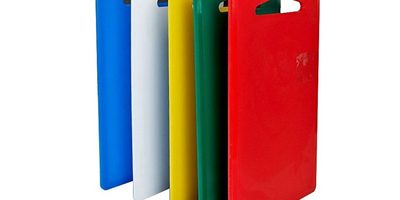Selecting the right plastic cutting board for your kitchen is an important decision that can impact both food safety and functionality. In this article, we’ll explore the key factors to consider when choosing a plastic cutting board to meet your specific needs.
- Size: Determine the appropriate size of the cutting board based on your available countertop space and typical food preparation needs. A larger board provides more workspace but may be less convenient for storage.
- Thickness: Plastic cutting boards come in various thicknesses. Thicker boards tend to be more durable and resistant to warping but may be heavier and less portable.
- Material Type: Look for cutting boards made from high-density polyethylene (HDPE) or polypropylene, which are known for their durability and resistance to moisture and bacteria.
- Color Coding: If you’re concerned about cross-contamination, consider using color-coded plastic cutting boards. Assign specific colors for different food categories to maintain food safety.
- Maintenance: Consider how much maintenance you’re willing to undertake. While plastic cutting boards are generally low-maintenance, some may require more frequent replacement.
- Knife-Friendly: Be aware that plastic cutting boards can be tough on knife edges and may require more frequent sharpening. Using sharp knives can help reduce wear.
- Heat Resistance: Plastic cutting boards are not heat-resistant, so avoid placing hot pots or pans directly on them to prevent warping or melting.
- Thickness of the Board’s Edges: Check the thickness of the edges of the cutting board. Thicker edges provide more stability and durability.
- Brand Reputation: Research reputable brands known for producing high-quality plastic cutting boards. Customer reviews and recommendations can provide valuable insights.
- Price: Set a budget for your cutting board purchase, but be willing to invest in a quality board that will last longer and meet your needs effectively.
- Environmental Considerations: If environmental sustainability is a concern, look for cutting boards made from recycled materials or consider alternative materials like bamboo or wood.
- Warranty: Some manufacturers offer warranties on their cutting boards, providing added peace of mind regarding the product’s durability.
By carefully considering these factors, you can choose a plastic cutting board that aligns with your cooking style, kitchen space, and maintenance preferences. A well-selected cutting board will enhance your food preparation experience while ensuring food safety in your kitchen.






